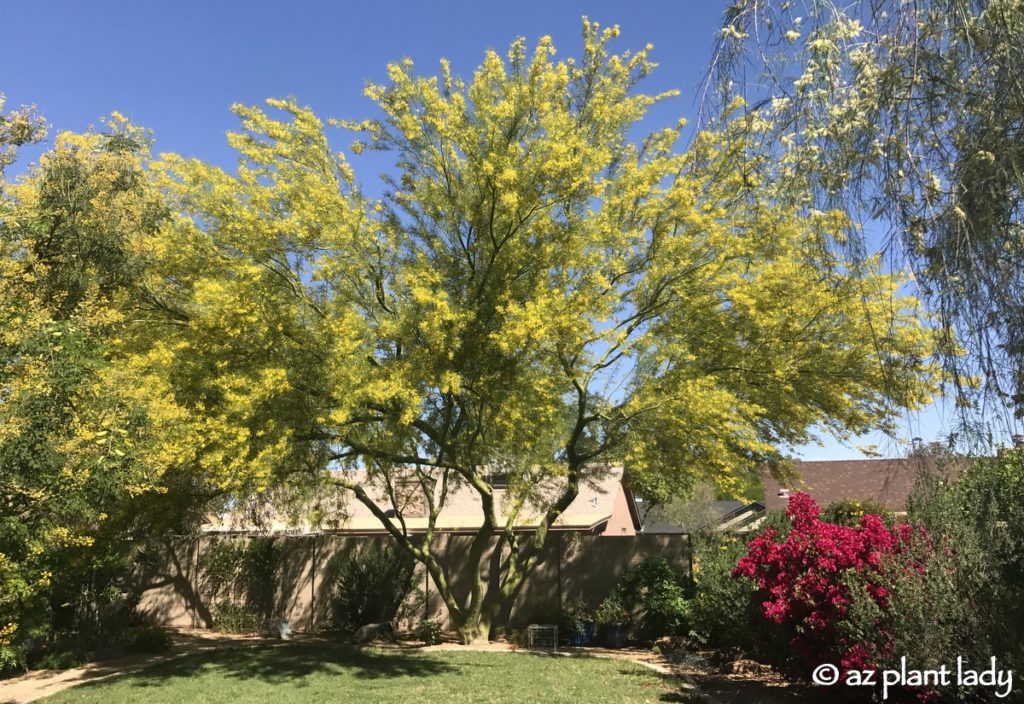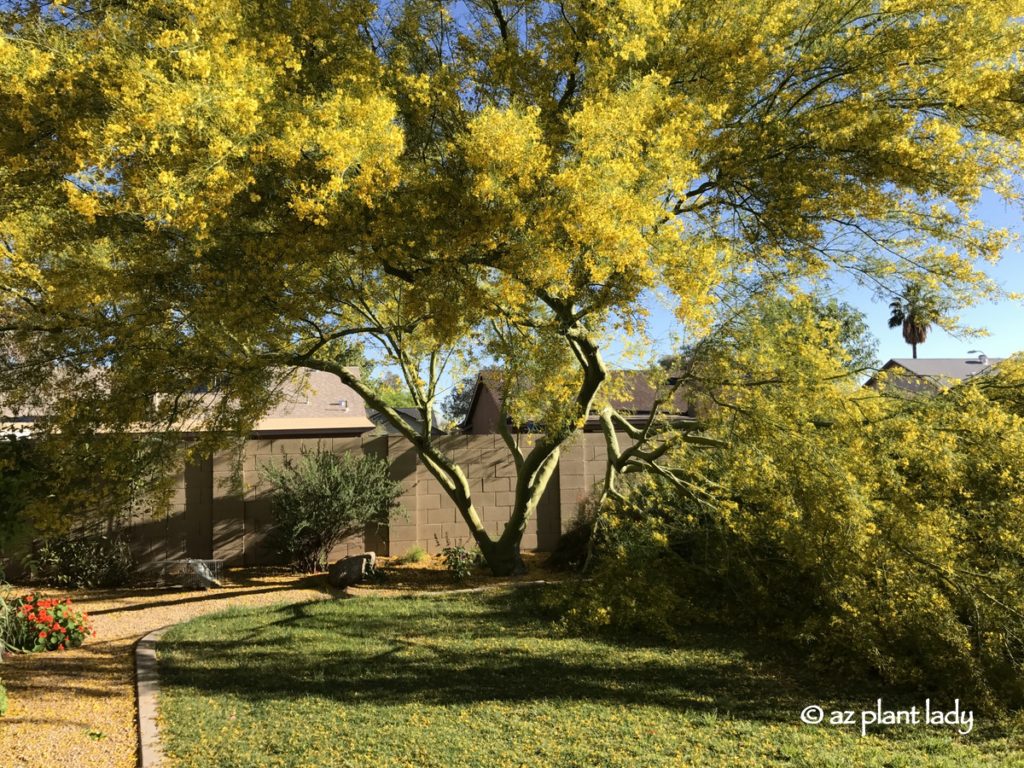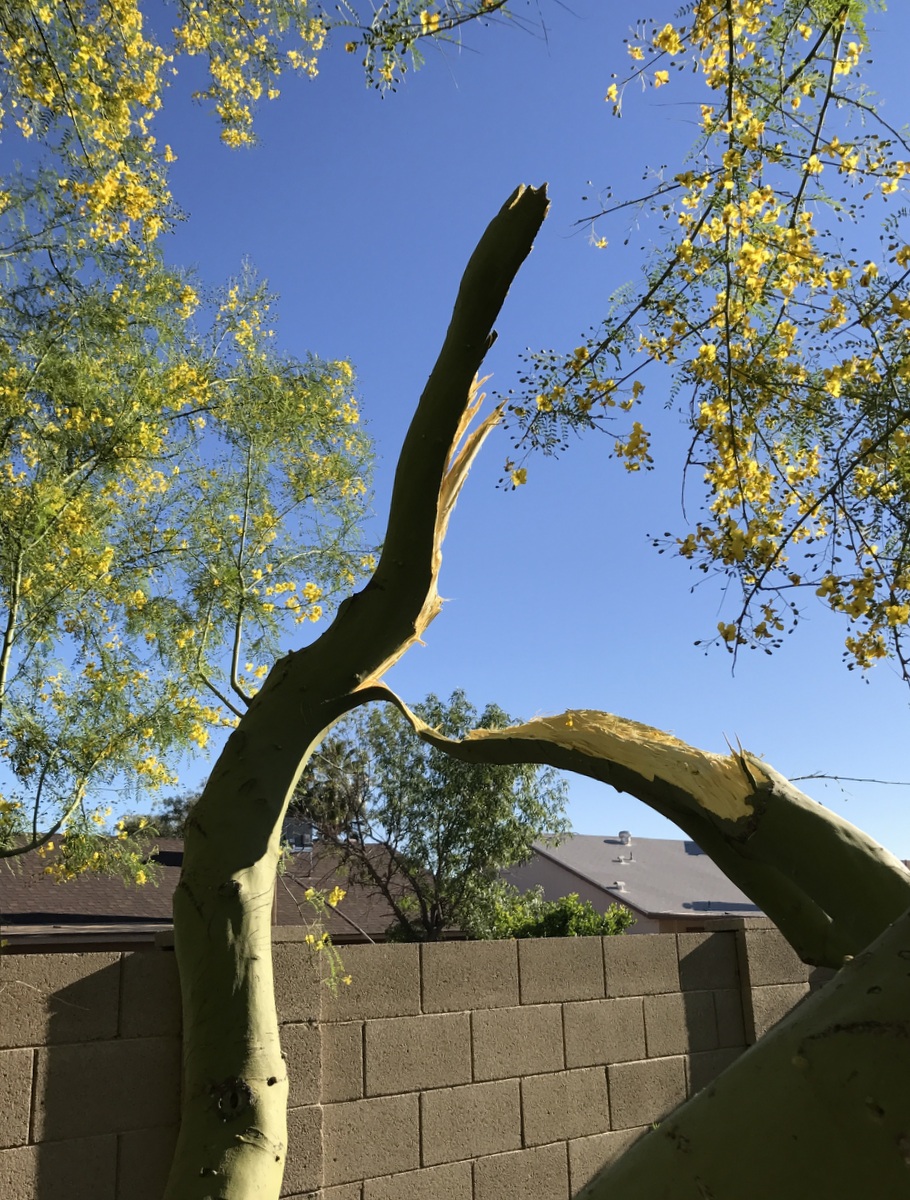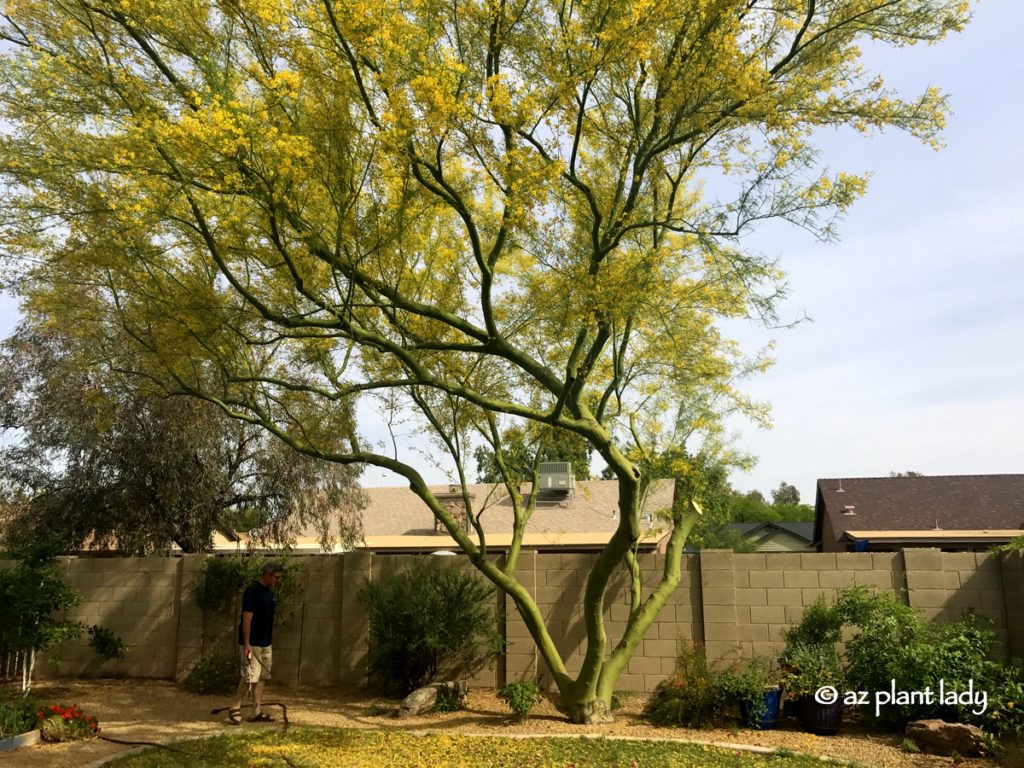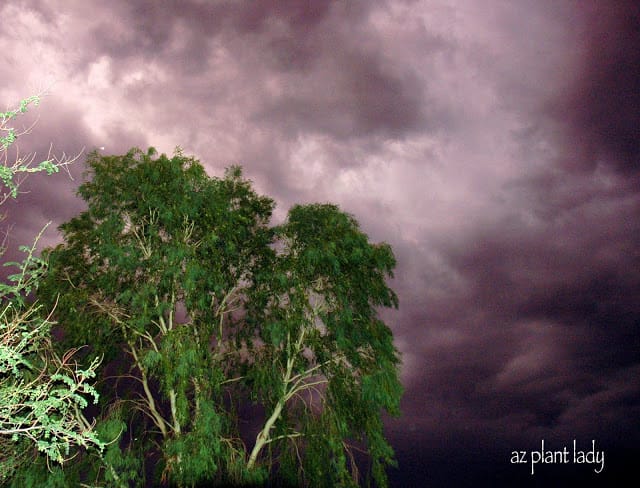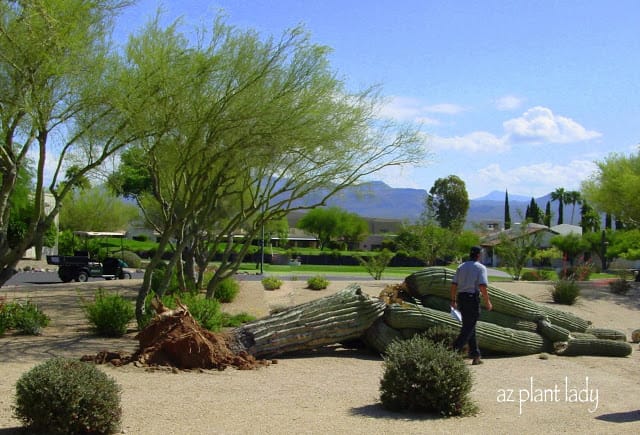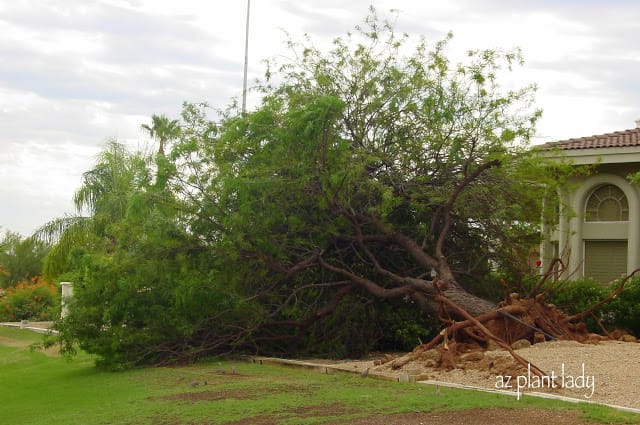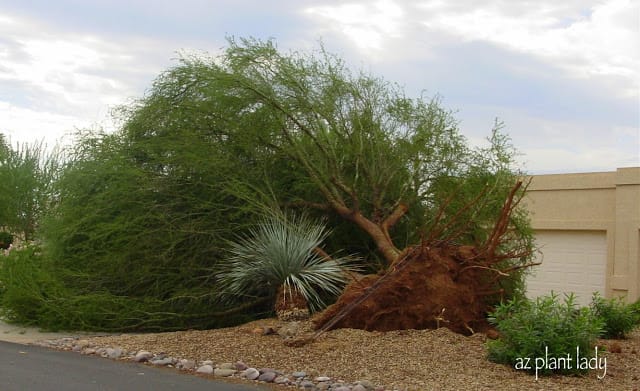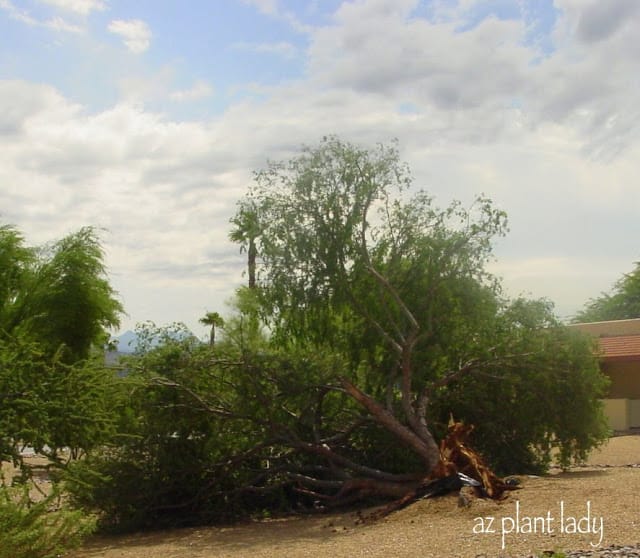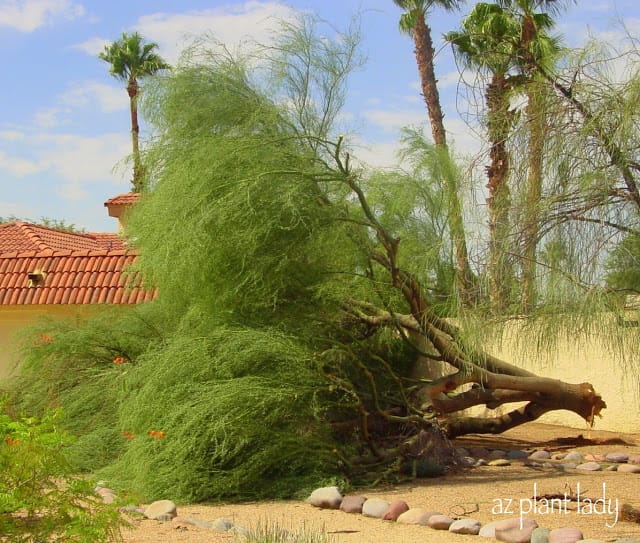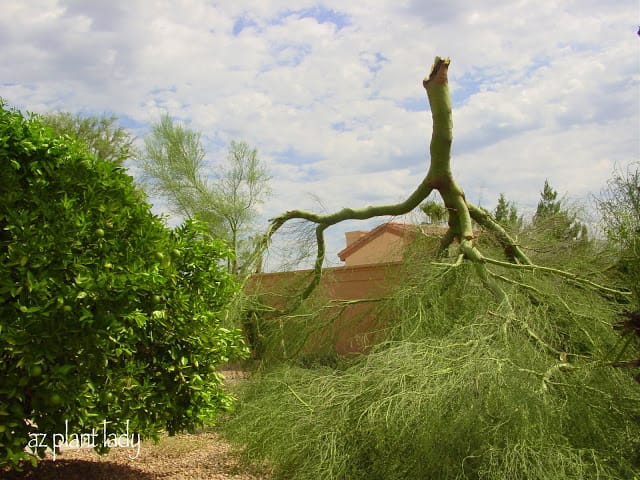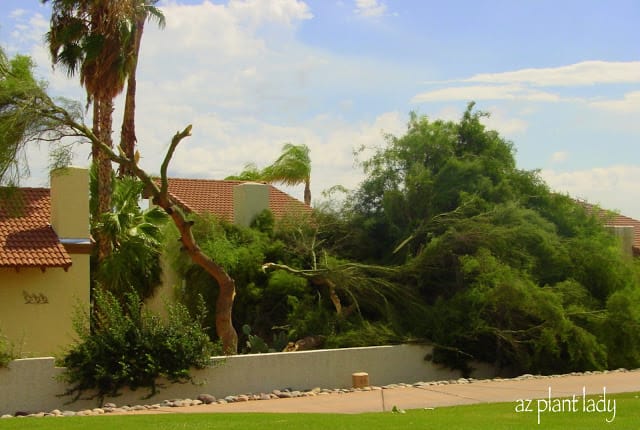Exploring the Beauty of the Desert Museum Palo Verde
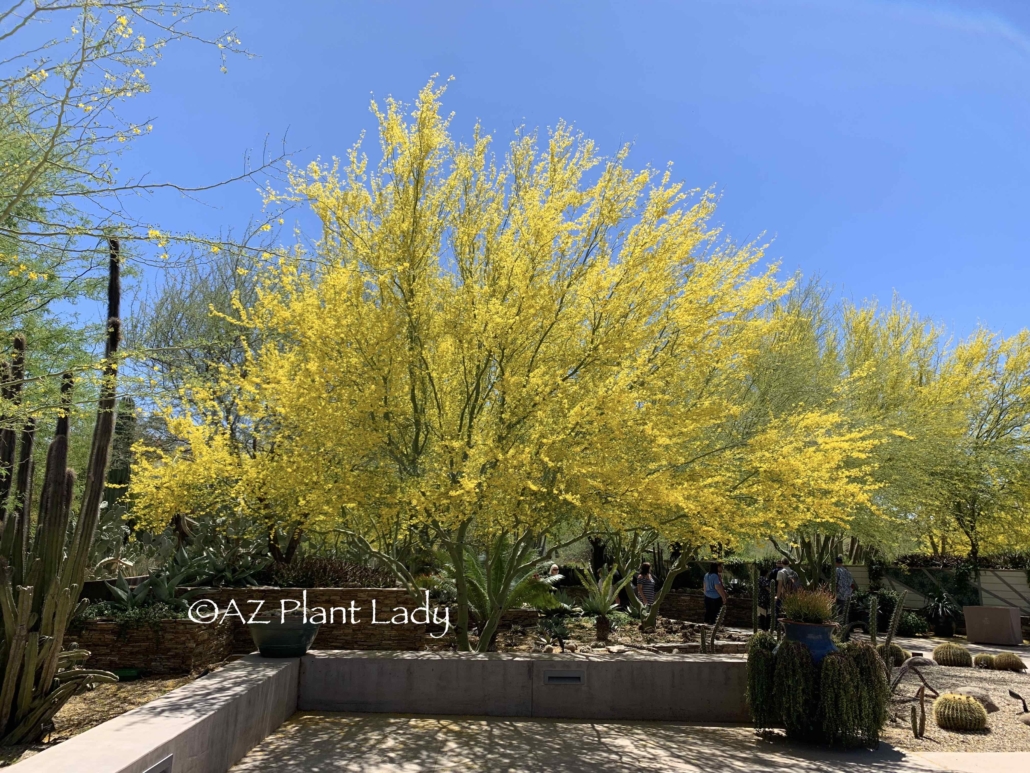
‘Desert Museum’ Palo Verde Trees
The Desert Museum Palo Verde (Parkinsonia ‘Desert Museum’), a beloved tree in arid climates, graces numerous residential, commercial, and community landscapes. Its striking medium-green trunk, feathery foliage, and golden late spring flowers contribute to its widespread popularity. While wind damage can be a concern, proper care and selection can ensure these trees thrive.
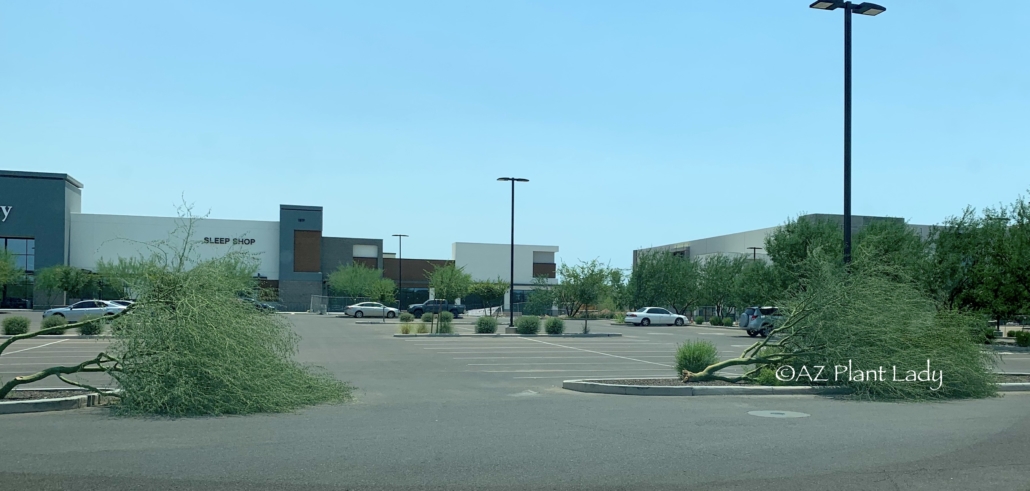
Fallen ‘Desert Museum’ Palo Verde trees after a monsoon storm
These wonderful trees stand as a captivating addition to arid landscapes. Its medium-green trunk, delicate foliage, and vibrant late-spring blooms make it a cherished choice for many. However, understanding and addressing potential wind damage is crucial for their successful growth.
Understanding Wind Damage Concerns
One common hesitation in planting palo verde trees is their perceived susceptibility to wind damage. However, most issues arise from improper maintenance, unsuitable locations, or the selection of the wrong tree type within the Palo Verde family.
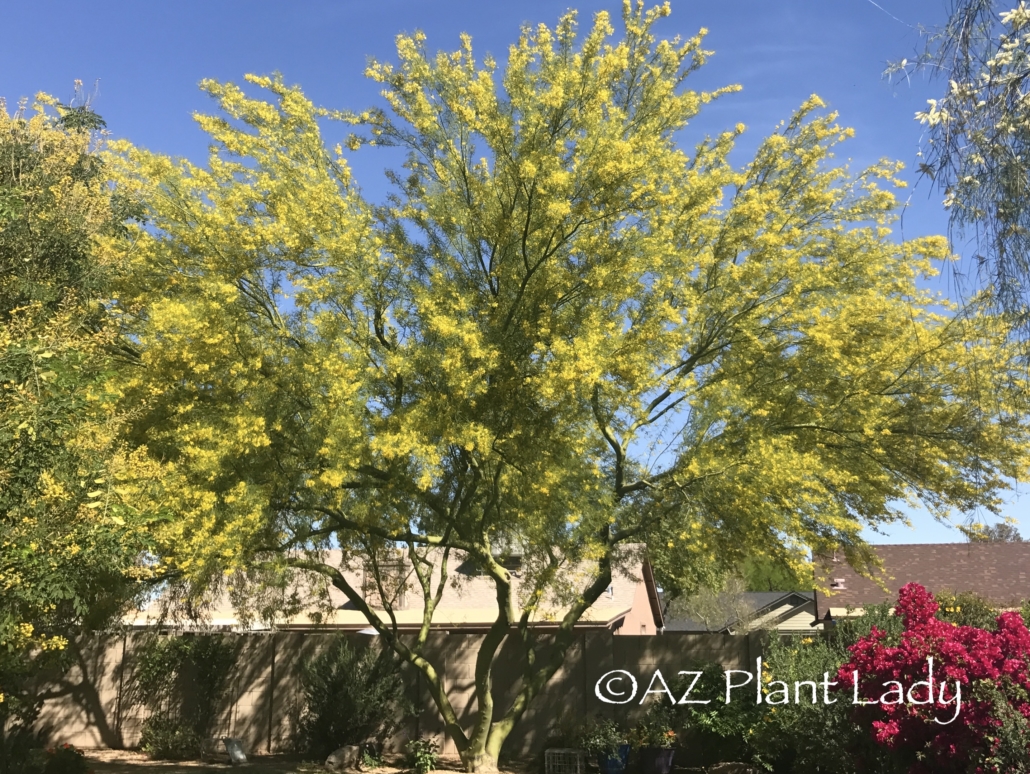
Desert Museum Palo Verde tree in my backyard
Personal Success with Desert Museum Palo Verde
I have three of these Palo Verdes around my house. They range in age from 10 to 20 years old. In all that time, I have not lost a single one. While minor branch breakage occurred at times, these resilient trees quickly recovered, showcasing the hardiness of this species.
So, how can you enjoy the beauty of this tree while lessening the danger of wind damage? As a retired certified arborist, I’m here to tell you that there are definitely things you can do.
5 Strategies for Structurally Healthy ‘Desert Museum’ Palo Verdes Trees
1. Water deeply to a depth of 3 feet.
Deep roots are key to the stability of a tree and also decrease the chance of uplifting roots. Apply water toward the outer reaches of the branches where the roots are concentrated. As a tree grows, its roots move outward, so move your drip emitters or hose as needed.
Be sure to plant in an area where there is adequate area for root growth. Parking lot islands and narrow areas don’t allow enough room for roots to anchor the tree.
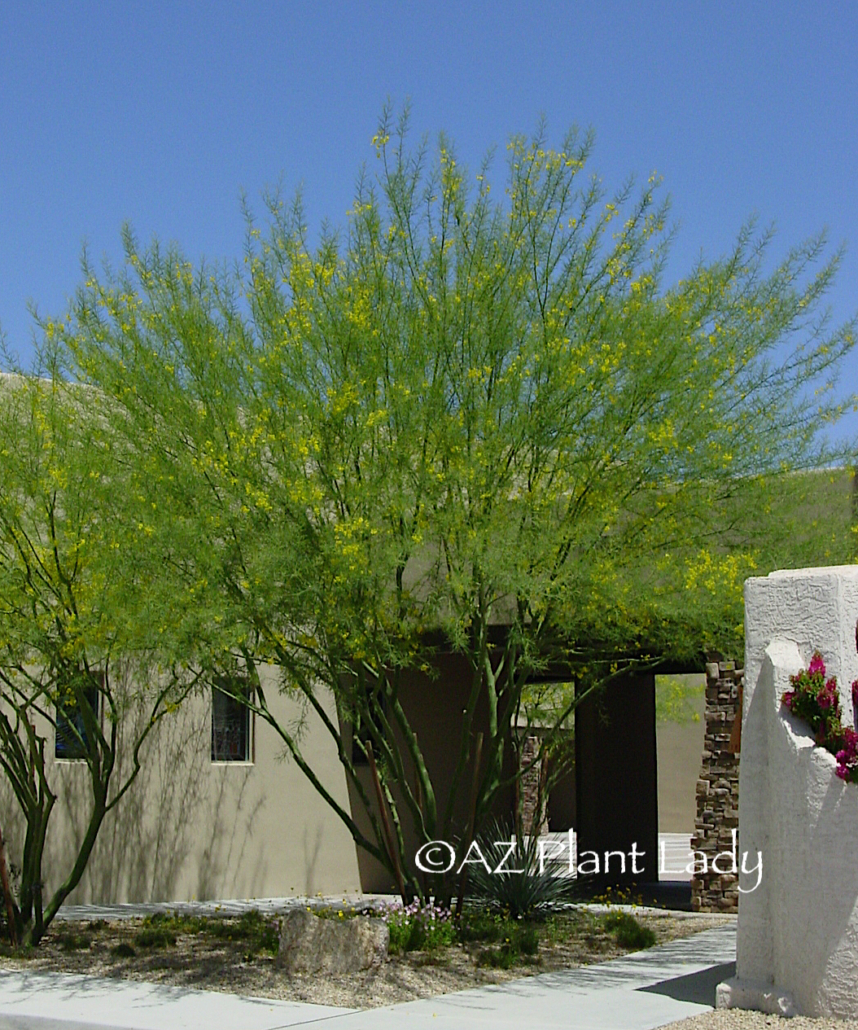
‘Desert Museum’ palo verde that has grown too rapidly due to excess irrigation
2. Irrigate less frequently to avoid your tree growing too fast.
This is a big cause of wind damage with palo verde trees. It’s important to remember that they are desert trees and don’t need as much water as other plants in the landscape. But, people often overwater their desert trees, which causes them to grow too quickly. This causes the formation of weak wood because they haven’t had the time to grow strong trunks and branches. In the photo above, notice how thin the multiple trunks are.
Established native desert trees, that have been in the ground for at least 3 years, can follow these general guidelines – water 1 to 2X a month in spring/fall, 2 to 3X a month in summer, and monthly in winter. These guidelines are for our current drought situation but can be modified as needed.
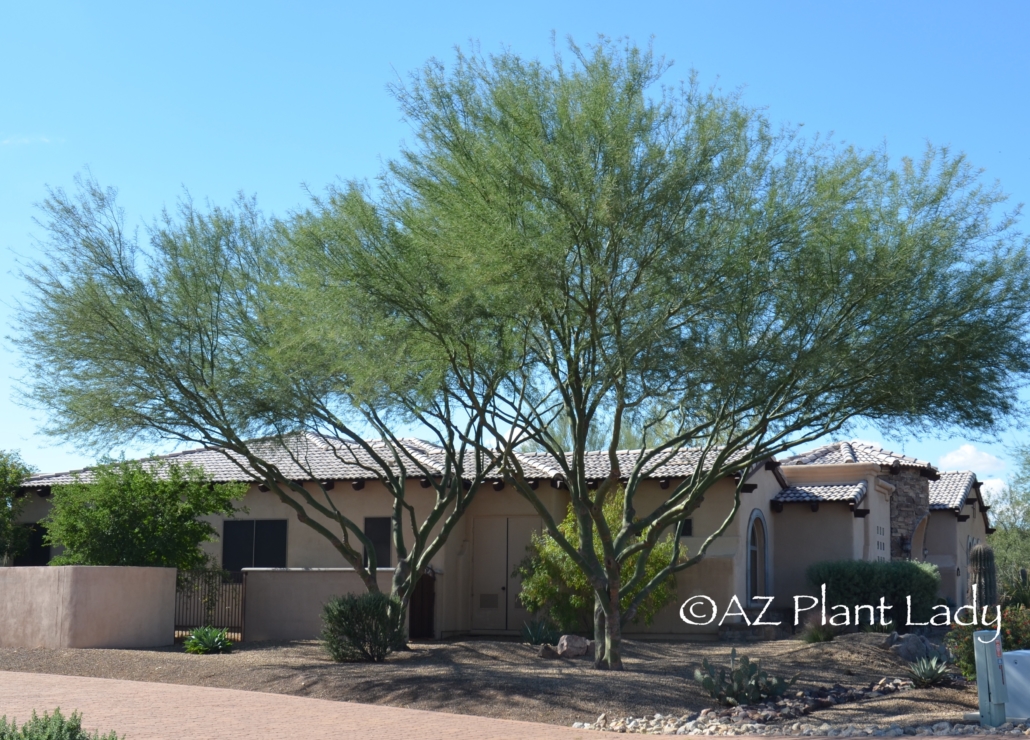
Trees that have been pruned up too high (lion-tailing)
3. Prune your tree correctly.
There are examples of awful pruning. One common one is known as ‘lion-tailing’ which is when trees have been over-pruned so the majority of the tree is devoid of branches except for the very top. This pruning deprives the branches of foliage needed to produce energy for the tree and to increase tree strength. It also increases the amount of overhanging branches toward the top making the tree more likely to fall.
Many landscapers don’t know the right way to prune trees and can inadvertently cause harm to your tree. I highly recommend enlisting the services of a certified arborist to prune your tree correctly.
4. Select a multi-trunk form of Palo Verde instead of one growing on a single trunk.
Desert trees naturally in a multiple trunk form, which distributes the weight of the upper branches. Palo Verde trees that have been trained to grow on a single trunk, are under more stress from the wind with their heavy top half. The majority that you see fallen have been trained into a single-trunk tree.
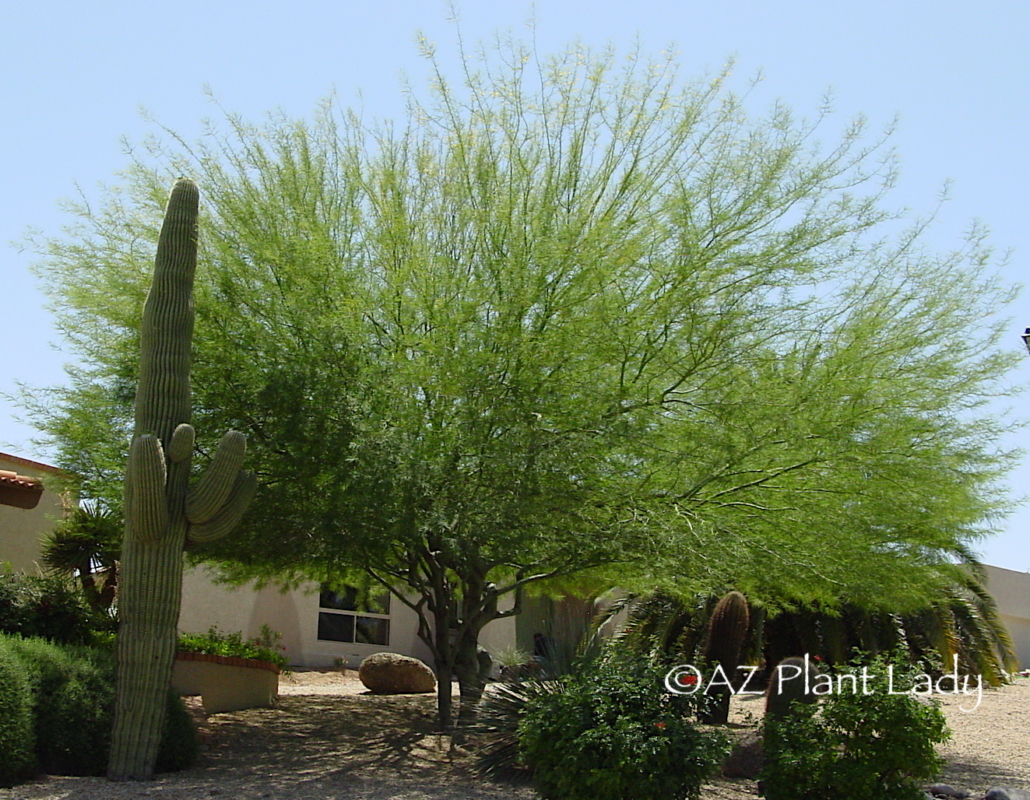
This tree needs pruning before the monsoon season to lessen the weight of the canopy
5. ‘Desert Museum’ Palo Verde trees generally need pruning at least once (sometimes twice) a year.
You want to be sure to prune them before the onset of monsoon season – removing any heavyweight or branches that are weakly attached.
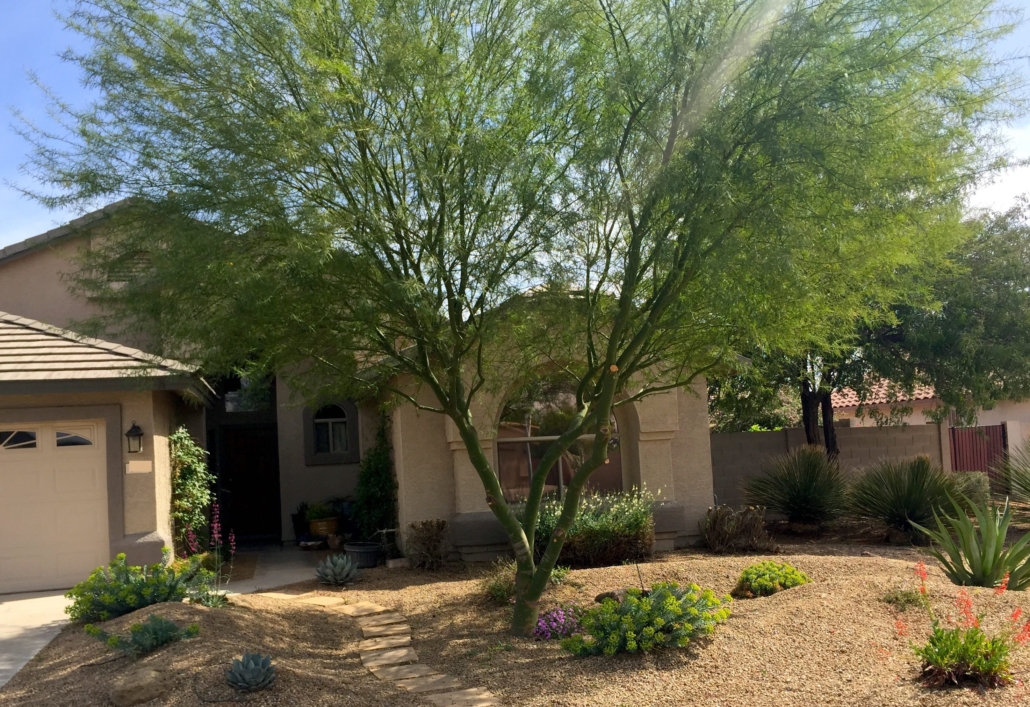
Newly-pruned ‘Desert Museum’ palo verde tree ready for the monsoon season
Ensuring the Future of Your Desert Museum Palo Verde
Desert Museum Palo Verde trees are a valuable asset to desert gardens, offering beauty and shade. By following these tips, you can safeguard your tree’s health and stability for years to come. Join me in celebrating the enduring allure of these magnificent desert trees.
Want to learn more about this and other Palo Verde tree species? Check out my previous blog post here.


